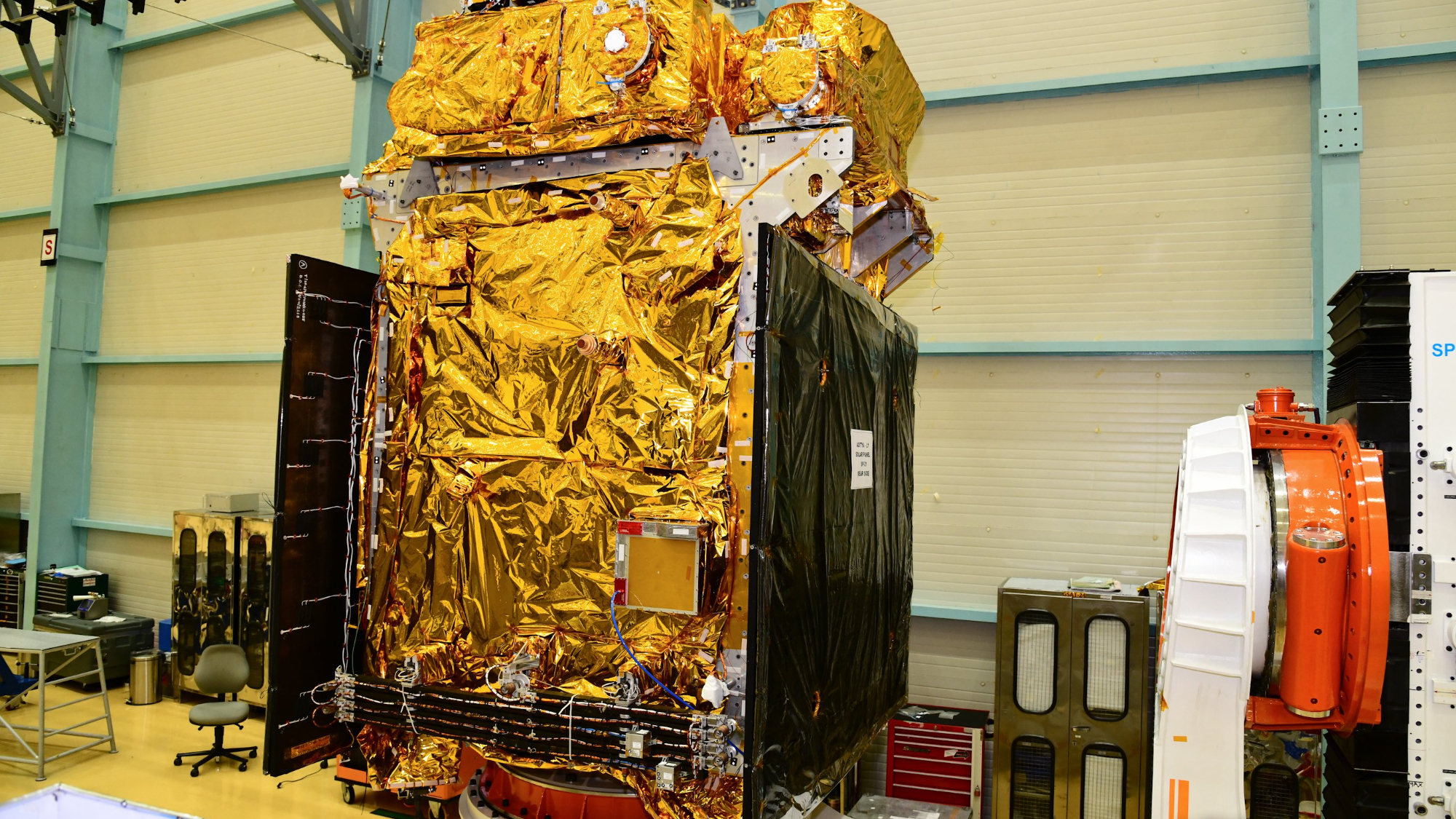India prepping to launch 1st sun-studying spacecraft next month
Aditya-1 will be India's first mission to study the sun.

India is gearing up for its first-ever mission to study the sun, expected to launch in early September.
The observatory, called Aditya-L1 ("Aditya" means "sun" in Sanskrit), has arrived at its launch site on the island of Sriharikota, on India's east coast.
The Indian Space Research Organisation (ISRO), India's national space agency operating this mission, shared the first pictures of the spacecraft on X (formerly known as Twitter) on Aug. 13.
Related: Sun blasts out highest-energy radiation ever recorded, raising questions for solar physics
PSLV-C57/Aditya-L1 Mission:Aditya-L1, the first space-based Indian observatory to study the Sun ☀️, is getting ready for the launch. The satellite realised at the U R Rao Satellite Centre (URSC), Bengaluru has arrived at SDSC-SHAR, Sriharikota. More pics… pic.twitter.com/JSJiOBSHp1August 14, 2023
While the sun has been studied for a long time, scientists are still puzzled by how its outermost atmospheric layer, known as the corona, gets so hot — about 1.8 million degrees Fahrenheit (1 million degrees Celsius) hotter than the sun's surface. Researchers know little about what exactly unfolds on the sun before it unleashes solar flares and huge plasma clouds called coronal mass ejections (CMEs) into space — and at times toward Earth — and how CMEs accelerate to tremendous speeds close to the sun's disk.
Scientists are hoping the Aditya-L1 observatory will provide some clues into these decades-long mysteries.
While ISRO hasn't yet announced a launch date for the mission, the spacecraft is expected to lift off atop a four-stage rocket in the first week of September, according to local media reports.
Get the Space.com Newsletter
Breaking space news, the latest updates on rocket launches, skywatching events and more!
The rocket, known as the Polar Satellite Launch Vehicle, will first place the observatory into a stable, circular path around Earth. Once scientists are sure its seven onboard instruments have survived the launch in good shape, the spacecraft's circular orbit will be stretched to an egg-shaped path that will kick start its four-month journey to its final destination.
The observatory will ultimately head to a parking spot in space about 1 million miles (1.5 million kilometers) from Earth, from where it will get an uninterrupted view of the sun. This cosmic outpost, called the Earth-sun Lagrange Point 1 or L1, is also home to the Solar and Heliospheric Observatory, a project by NASA and the European Space Agency that has been keeping an eye on solar activity since 1996.
Of the seven payloads on board Aditya, four are dedicated to directly viewing the sun. These include two X-ray spectrometers that will study the properties of solar flares, a coronagraph that will snap continuous images of the sun to detect flares forming on the sun and a fourth instrument to measure solar radiation.
Among the remaining three science instruments, two are equipped to study solar wind and its components, while the third is a magnetometer to measure magnetic fields at the spacecraft's position in L1, according to the mission plan.
The Aditya-L1 observatory, which costs nearly 3.8 billion rupees ($45 million) and has been 15 years in the making, is India's second momentous launch this year. Last month, the Chandrayaan-3 spacecraft lifted off from Sriharikota on its fuel-efficient path to the moon and is expected to attempt a touchdown on Aug. 23 or Aug. 24.
Join our Space Forums to keep talking space on the latest missions, night sky and more! And if you have a news tip, correction or comment, let us know at: community@space.com.

Sharmila Kuthunur is a Seattle-based science journalist focusing on astronomy and space exploration. Her work has also appeared in Scientific American, Astronomy and Live Science, among other publications. She has earned a master's degree in journalism from Northeastern University in Boston. Follow her on BlueSky @skuthunur.bsky.social









